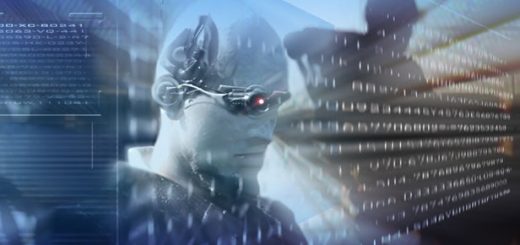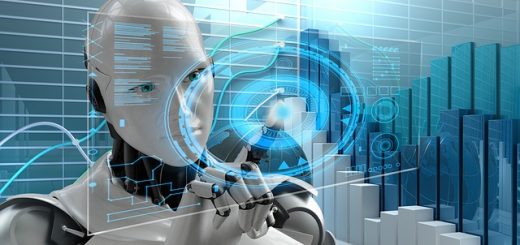Driverless train technology features, uses, advantages and disadvantages
Driverless trains are fully operational without drivers, They are moving by unattended train operation (UTO), Under the UTO mode, these new trains will be controlled and their movement regulated by the Operations Control Centres (OCC) and not by manual train operators, Driverless operation offers a greater on-train presence without increasing staff costs, driverless operation increases the passengers & reduces the operating costs.
Driverless Train features
Driverless trains are self-contained rapid transit systems, All functions of the vehicle are controlled by the driver for Grade 0 (GoA 0), ATP (automatic train protection) is installed to prevent collisions, it will automatically apply the brakes if the train passes a red signal or is travelling too fast, The trains are effectively monitored and controlled by staff based in a remote control centre.
Driverless trains are upgraded and eco-friendly, CCTV cameras can be installed for inside & outside view of the train, The CCTV images could be directly accessed by the control centre in driverless mode, Dynamic route maps are found in each door panel to let the passengers know their journey status, Driverless trains can’t commit human errors, and the capacity of carrying passengers has been increased in the Driverless trains.
Driverless trains are more energy efficient than the earlier ones with better regeneration of energy during braking, There are more energy-efficient subsystems inside the coach such as LED lighting & air conditioning systems, Each coach comes with four 18.5-inch LCD screens continuously displaying audio-visual messages and commercials, and fibre reinforced plastic seats have been introduced to add colour.
Semi-automatic train operation still requires a driver to be in the cab, This technology involves the automatic handling of all aspects of train operation, with a trained human operator on board the train to handle customer service, ticket checking & to take control in the event of an emergency.
Driverless trains run automatically with no onboard staff necessary, All operations are monitored by a vast array of remote technologies, from CCTV and onboard telemetry to automatic detection systems, These advanced lines are monitored by a control centre that tracks all trains & potential hazards.
Advantages of driverless trains
Driverless technology can improve punctuality & reduce ongoing operating costs, The benefits associated with ATO stem are consistent control of train speed profiles and greater potential for traffic management strategies to be implemented directly, Automatic Train Operation (ATO) can increase the frequency of trains, it offers a better recovery from delays, essentially an increase in the capacity of the system, Automatic Train Operation reduces the human error, and increases the safety of the system.
Automatic Train Operation minimizes energy consumption for a given journey time by controlling the speed, including real-time optimization to take delays into account, smoother changes of acceleration compared to manual control may increase the lifespan of wheelsets and traction/braking equipment, and can also improve passenger comfort.
Automatic Train Operation can increase the number of trains, It can reduce the total fleet size, it can reduce the maximum rating of the electrical power supply system or major civil engineering structures, Driverless trains can increase capacity not just on the trains but also the routes because of its automation.
The role of drivers is changed to an on-board passenger-facing role to assist passengers (improving the service quality) and carry out revenue protection (reducing costs of this task if it is currently performed by separate staff), their presence can help improve actual and perceived personal security.
Automatic Train Operation no longer needs to be staffed at all, which can reduce staff costs, as the marginal cost of running additional trains is much reduced, Many systems do not have staff on trains and stations, the system is capable of operating without any members of staff present if necessary, This eases staff recruitment and rostering constraints, as well as making the system more resilient to industrial action by trade unions.
Automatic Train Operation offers much greater flexibility in the timetable, allowing train frequencies to be better matched to demand at peak and off-peak times, This offers a much better service to potential passengers and drives an increase in passenger numbers.
Automatic Train stations have platform screen doors or gates, with implementing intrusion detection systems based on infra-red scanners or similar technology, Platform screen doors remove the risk of passengers on the track completely, but intrusion detection systems can mitigate the risk, as the passengers may fall (or jump, in case of suicides) directly in front of the train, or between coupled vehicles.
The system comes with improved communication & monitoring systems for the passengers, to offer functions that would otherwise be carried out by a member of staff, This applies to remote monitoring and correction of faults in equipment by a remote control centre, The equipment requires high levels of reliability and availability to ensure passenger safety that would represent additional capital and maintenance costs.
Driverless operation offers a high service quality, The benefits of introducing ATO over manual driving are more consistent performance: closer working to line speeds and avoidance of ‘over-cautious’ station and signal approaches, which in turn can support greater network capacity.
The ATP system is intermittent, protecting against signal overruns but not providing continuous speed supervision, manual driving can maintain the average cruising speed at close to the line speed limit, The key difference between manual driving and ATO is during braking, where ATO can offer a higher average deceleration than less consistent (and more cautious) manual driving.
The automatic train control system is an easy way of transport from and to a remote area, it has High-speed technology, By using the automatic train systems we can travel a safe journey, they are fully air conditioning trains, they offer modernity & accessibility, Automated train operation (ATO) is cost-effectiveness, it has high traffic frequency and flexibility, it offers punctuality and efficiency.
UTO increases network capacity, It brings many benefits to all key players in the system: passengers, train operators, funding bodies and staff, The key benefits of driverless trains are a train running time optimization, the average speed of the system increases, headways shortening and dwell time in stations reduction.
by removing the driver from the train, the human-risk factor is reduced and overall safety and reliability of the system increases, in terms of operational costs of a driverless railway system, less train drivers equal cost savings, although more staff are recruited for other tasks, automated acceleration and deceleration patterns help with energy recovery and savings contributing to environmentally friendly driving and cost savings.
Disadvantages of driverless trains
Driverless operation comes with high capital costs and high operational costs too, The capital costs of signalling and control equipment (and other systems required for driverless operation, such as remote monitoring and passenger communications) are likely to be significant, and will have associated maintenance costs, large capital investments or increases in operational costs would be difficult to justify, as increasing passenger capacity is not an immediate requirement.
Handing total control over to an automated system can put passengers at risk, We used to travel in public transport driven by a trained driver who can respond to unusual situations and offer a friendly atmosphere to the public, Many passengers can misuse the doors, and this is the most common cause of delays on UTO systems, while false alarms from intrusion detection systems are also a potential source of delay.
Automatic train operation (ATO), control (ATC) & protection (ATP)
Artificial intelligence in transportation advantages, disadvantages & applications
Automated metro trains features, types advantages & disadvantages



